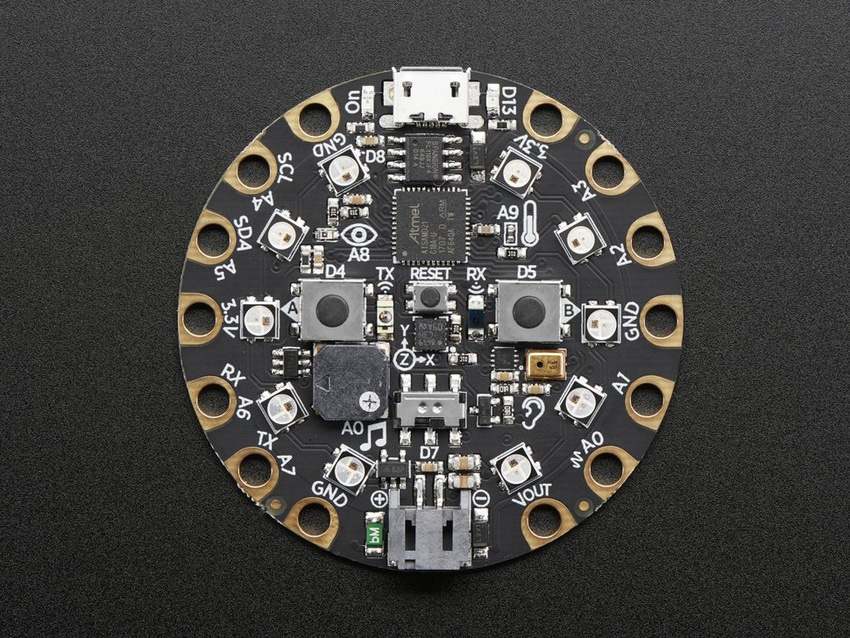3 of the Best Budget Embedded Platforms for Predictive Analytics
If you're a Maker looking to experiment with predictive analytics, these three platforms will get you started for only around $30.
April 26, 2019

Have you ever considered using predictive analytics (PA) in one of your projects? It's cheaper and easier than you might think.
The usage of PA has surged in recent years as organizations adopt it to gain a competitive advantage and increase their bottom line. Manufacturers are leverage PA for predictive maintenance and other cost- and time-saving measures. Retailers looking to understand consumer shopping behaviors are promoting the use of PA to products and services. It can even be used for diagnostic services in medical applications.
The idea of PA Is to leverage data to assess what will happen in the future based on previous or current knowledge and experiences. Big Data is particularly useful for PA because it allows predictive models to be built with a high confidence coefficient correlation indicator to ensure an accurate outcome from the analytical experiment or measuring event.
Though the use cases can be complex, the tools for performing PA are quite easy to use. The industrial and consumer markets and their competitive landscapes are driving the development and deployment of PA tools and solutions within the marketplace. As such there are even options available to Makers and the DIY community looking to utilize PA in their projects.
Here are three of the best options for embedded platforms that will get you started experimenting with PA concepts �– all for around $30.
1.) Adafruit Circuit Playground Express
|
The Adafruit CPX has six electronic sensors embedded on the PCB for a variety of physical measurements. (Image source: Adafruit) |
The Adafruit Circuit Playground Express (CPX) provides six electronic sensors on a small circular printed circuit board (PCB). It has electronic sensors for temperature, light, and sound (via a MEMS microphone) as well as an infrared (IR) receiver-transmitter, an accelerometer, and a compass. The signal data obtained from the electronic sensors can easily be exported from the CPX’s serial console into an Excel spreadsheet as a common separated value (csv) file.
The exported sensor data can be used within a linear regression model for PA analysis. The off-the-shelf software packages typically used to build and analyze the predictive model with an Adafruit CPX include: Orange, Scilab, Octave, Matlab, and Excel. Python can be used to code a linear regression model for analysis as well. Monitoring and sensing applications for the CPX include: vibration/motion, magnetic field detection, ambient light measurement, and temperature analysis. Also, CircuitPython code can be used in developing wireless sensing devices with the CPX.
RELATED ARTICLES:
2.) The BBC micro:bit
|
The BBC micro:bit has four electronic sensors, a RF radio, and Bluetooth chipset for PA sensing applications. (Image source: BBC micro:bit). |
The BBC micro:bit is analogous to the CPX in terms of its small form factor and variety of electronic sensors embedded on its miniature, rectangular PCB. The electronic sensors that are populated on the BBC micro:bit’s PCB include temperature and light sensors, an accelerometer, and a magnetometer. The BBC micro:bit also has an RF radio embedded with a Nordic Semiconductor microcontroller (the nRF51822) and a Bluetooth chipset.
Predictive analytics applications for the micro:bit are similar to the CPX, except that users can use the micro:bit's embedded RF radio or populated Bluetooth chipset to build a small personal area network (PAN). It can also handle vibration and motion sensing, magnetic field detection, ambient light measurement, temperature analysis, as well as wireless sensing.
Data obtained from the embedded sensors can be exported to an Excel spreadsheet as a csv file. The off-the-shelf software packages that can be used to build and analyze the predictive model with a BBC micro:bit include: Orange, Scilab, Octave, Matlab, and Excel. Python can be used to code a linear regression model for analysis as well. In addition, javascript code can create a mobile application using iOS or Android mobile development tools with the BBC micro:bit.
3.) The Raspberry PI Zero W
|
The Raspberry PI Zero W is a Linux-based SBC capable of creating wireless sensing detection of environmental conditions using Bluetooth or WiFi chipsets. (Image source: Raspberry Pi Foundation) |
The Raspberry Pi Zero W is the mini version of the popular Linux-based single board computer (SBC). The Raspberry Pi Zero W has Bluetooth and WiFi chipsets for creating wireless sensing devices. Although the Raspberry Pi Zero does not have true analog sensing capabilities, a low-cost circuit using a capacitor and the analog signal component (thermistor or light sensor) can be deployed for such data aggregation activities.
If an advanced analog sensing application is required, the popular MCP3008 analog to digital converter (ADC) integrated circuit (IC) can be easily wired to the PI Zero W’s general-purpose input/output (GPIO) pins.
PA applications for the Pi Zero W include vibration/motion sensing, temperature, ambient light sensing, and proximity detection. Wireless monitoring can be done using the onboard Bluetooth and WiFi chipsets. The off-the-shelf software packages that can be used to build and analyze the predictive model with a Raspberry Pi Zero W include: Orange, Scilab, Octave, Matlab, and Excel. Python can be used to code a linear regression model for analysis as well.
For additional information on PA applications and hands-on experimentation with low cost PA platforms, check the Design News CEC Prototyping Predictive Analytics Technique webinar course.
Don Wilcher is a passionate teacher of electronics technology and an electrical engineer with 26 years of industrial experience. He’s worked on industrial robotics systems, automotive electronic modules/systems, and embedded wireless controls for small consumer appliances. He’s also a book author, writing DIY project books on electronics and robotics technologies.
ESC BOSTON IS BACK! The nation's largest embedded systems conference is back with a new education program tailored to the needs of today's embedded systems professionals, connecting you to hundreds of software developers, hardware engineers, start-up visionaries, and industry pros across the space. Be inspired through hands-on training and education across five conference tracks. Plus, take part in technical tutorials delivered by top embedded systems professionals. Click here to register today! |
About the Author(s)
You May Also Like







.jpg?width=300&auto=webp&quality=80&disable=upscale)

